Papers by Yonatan T Tewelde

Diaspora: A Journal of Transnational Studies
This study explores the utilization of the PalTalk chat application by the Eritrean diaspora as a... more This study explores the utilization of the PalTalk chat application by the Eritrean diaspora as a platform for solidarity building and long-distance activism against totalitarianism in their home country between 2000 and 2016. The objective of this research is to analyze the role of Eritrean PalTalk as a transnational mobilization network, with a particular focus on “Smer” room, one of the most popular Eritrean PalTalk groups ( Smer is “unite” in Tigrinya). The study delves into the evolution, struggles, and milestones of “Smer” room and illustrates how Eritrean migrants, living under a regime where private press is banned and criticism of the government is not tolerated, utilized chat rooms as safe spaces for solidarity building and public opinion construction. Additionally, the research considers how PalTalk may have enabled diaspora Eritreans to overcome fears of punishment from the repressive state, and how chat room patrons planned and mobilized diasporic mass demonstrations in...

Journal of African Cultural Studies, 2015
The paper focuses on the shifts in the iconic representation of war heroes of the Eritrean strugg... more The paper focuses on the shifts in the iconic representation of war heroes of the Eritrean struggle for freedom, by studying key iconic photographs and their significance to the Eritrean national identity construction process. The article focuses on one of the most famous photographs in the country which has been related to the discourse that indebts peace and freedom of the country to the history of the nation's freedom fighters. The photograph analysed in this paper is that of Hamid Idris Awate, the man credited with starting the 30-year-long Eritrean armed struggle for independence from Ethiopian rule. This image is compared to another photograph taken at the end of the Thirty Years' War. The two images, which have a 30-year gap between them, exhibit a shift from the aspiration of individual heroes and figures towards a collective spirit of sacrifice and achievement in the development of the national Eritrean narrative. This study shows that Awate's photograph ascended to the state of a national icon owing to contextual connotations derived from its content. Early Orthodox Christian imagery is comparatively analysed as a possible factor for the potency of the compositional style in the photograph. Moreover, the essay relates the photograph to Italian pictorial representations of black native recruits and comparatively links it with the visual representation of Eritrean society by Italian colonizers.

Northeast African Studies, 2019
This article addresses the impact of modern European Christian imagery on the visual culture of t... more This article addresses the impact of modern European Christian imagery on the visual culture of the Orthodox Tewahedo Church of Eritrea, which has a long history of using illuminated manuscripts, paintings, and crosses as essential elements of worship and prayer. Tewahedo icons are characterized by brown- and black-skinned Christian figures and indigenized settings that narrate Evangelical and monastic scripture for devotees. This study highlights the domination of European white imagery in liturgical spheres in Eritrea and assesses the impact on the semiotic composition of locally produced paintings. Further, nuanced codes of race and skin color are analyzed in relation to connotations of good and evil. The semiotic analysis in this article also shows that European influences are more prevalent in religious paintings that depict recognized saints in Catholic Europe, in comparison to images of local monastic saints, whose depiction continues to mirror the visual metaphors and local ...

the Hiob Ludolf Centre for Ethiopian and Eritrean Studies at Universität Hamburg, 2021
From the researchers and fellows of the Hiob Ludolf Centre for Ethiopian and Eritrean Studies at ... more From the researchers and fellows of the Hiob Ludolf Centre for Ethiopian and Eritrean Studies at Universität Hamburg
We have been following the reports on the military conflict that has erupted between the Federal Government of Ethiopia and the Regional Government of Tigray with great concern. In addition to continuing reports of the heavy toll that the conflict is taking on the civilian population, there are reports that the cultural property of Tigray is highly endangered and directly affected. Tigray is a part of Ethiopia that hosts an extraordinarily rich cultural heritage. The cultural heritage of Tigray has contributed to the development of the region and the entire country and has increased the visibility of Ethiopia as one of the most vibrant tourist destinations in Africa. In recent years, much has been done for its study and preservation—with newly recorded historical artefacts and manuscripts, archaeological sites, new museums, restored historical buildings, paintings and manuscripts, and collections of research data—but even more remains to be done.
Some of the recent reports have been suggesting that hostilities are taking place in close proximity to renowned cultural sites, and others mentioning that they have been plundered and damaged. In this context, sites of symbolic importance for all of Ethiopia have been referred to, such as the church at Yeha, al-Najashi Mosque, the church of Maryam Dengelat, the monastery of Dabra Abbay, the monastery of Dabra Dammo, and even St Mary Cathedral in Aksum (the city of Aksum itself is entered in the UNESCO World Heritage List). There are reports of looting of manuscripts from Tigrayan churches and monasteries, and warnings that they will sooner or later be taken out of Ethiopia to be sold at antiquities markets in other countries. It is beyond any doubt that the conflict is causing heavy damage to the cultural heritage, but since most communication lines remain cut off and the information coming from the region is minimal, it is difficult to assess the real scope of the losses.
As part of a research community that has been involved for many years in the study of Ethiopian culture, we are saddened about the plight of the civilian population. And we are increasingly concerned by the effect of the conflict on the cultural heritage of Tigray. We appeal to all parties involved to pay serious attention to the issue. We hope that the authorized state institutions will fulfil their obligations and do everything possible to protect the cultural property of Tigray from further destruction. They should investigate the cases of loss and looting reported by local communities, and make the results of the investigations public. In addition, special measures should be taken to secure the research materials accumulated in Tigray’s institutions from misappropriation and dispersion. We further urgently call upon the warring parties to abstain from attacking the cultural heritage and to respect the integrity of the places, both religious and secular, where this heritage is preserved. National or international initiatives aimed at recuperation of the negative effects of the war upon the cultural heritage should be encouraged and supported, as should urgent salvation measures. We appeal to all colleagues to assist, where necessary, in measures for restitution of the cultural property and assessing the damage inflicted upon it.
Leonard Bahr
Alessandro Bausi
Antonella Brita
Eliana Dal Sasso
Sophia Dege-Müller
Daria Elagina
Jacopo Gnisci
Hewan Semon Marye
Susanne Hummel
Jonas Karlsson
Magdalena Krzyzanowska
Pietro Liuzzo
Leah Mascia
Mersha Alehegne Mengistie
Denis Nosnitsin
Francesca Panini
Vitagrazia Pisani
Dorothea Reule
Salsawit Kassaye
Sisay Sahle Beyene
Eugenia Sokolinski
Solomon Gebreyes Beyene
Siegbert Uhlig
The appeal has also been endorsed by:
Mario Lozano Alonso, Universidad Complutense de Madrid
Alula Tesfay Asfha, University of Tsukuba
Ewa Balicka-Witakowska, Uppsala University
Dan Batovici, UCLouvain and KU Leuven
Kathryn Bard, Boston University
Beniam Awash, State University of New York, Oneonta
Yaqob Beyene, University of Naples "L'Orientale"
Verena Böll, Dresden
Vitor Borges da Cunha, Universidade Federal de Pelotas
Claire Bosc-Tiessé, Institut National d¹Histoire de l¹Art
Maria Bulakh, HSE University, Moscow
Aaron Butts, Catholic University of America
Nicola Camilleri, University of Padua
David Cielontko, Charles University
Skip (Bruce) Dahlgren, North Little Rock, AR
Catherine D'Andrea, Simon Fraser University
Steve Delamarter, George Fox University
Dessalegn Bizuneh Ayele, University of Gondar
Giovanni Dore, Università Ca' Foscari Venezia
Haggai Erlich, Tel Aviv University
Eloi Ficquet, EPHE
Serge A. Frantsouzoff, Institute of Oriental Manuscripts of the Russian Academy of Sciences
Karen French, Baltimore,USA
Emmanuel Fritsch, Lyon
Michael Gervers, Toronto University
Orin Gensler, Leipzig
Gidena Mesfin Kebede, TU Berlin
Ekaterina Gusarova, Institute of Oriental Manuscripts of the Russian Academy of Sciences
Habtemichael Kidane
Hagos Abrha Abay, Mekelle University
Carsten Hoffmann, Philipps-Universität Marburg
Ishikawa Hiroki, Tokyo University of Foreign Studies
Olga Kapeliuk, Hebrew University
Jürgen Klein, Protestant University Wuppertal
Verena Krebs, Ruhr-University Bochum
Bar Kribus, Ruhr University, Bochum
Manfred Kropp, Mainz University
Basil Lourié, St Petersburg, Russia
Leuel Tesfasilassie
Andrea Manzo, University of Naples "L'Orientale"
Dorothea McEwan, The Warburg Institute, University of London
Mebratu K. Gebru, Agora University
Daniele Minisini, Sapienza University of Rome
Jonathan Miran, Western Washington University
Sigrid Mirabaud, Institut national d'histoire de l'art
Mikael Muehlbauer, Columbia University
Moritz Alexander Müller, Goethe-Universität Frankfurt am Main
Rumi Okazaki, Shibaura Institute of Technology
Anne Parsons, London
Pierluigi Piovanelli, University of Ottawa - EPHE, Sciences religieuses, PSL
Maija Priess, Universität Hamburg
Delio Vania Proverbio, Biblioteca Apostolica Vaticana
Valeria N. Semenova, Peter the Great Museum of Anthropology and Ethnography (Kunstkamera) RAS
Luisa Sernicola, University of Naples "L'Orientale"
Kay Kaufman Shelemay, Harvard University
Veronika Six, Universitäts- und Staatsbibliothek, Hamburg
Nobuhiro Shimizu, the University of Tokyo
Wolbert G.C. Smidt, Friedrich-Schiller-Universität Jena
Solomon Getaneh, Addis Ababa
Toda Satoshi, Hokkaido University
Jutta Sperling, Amherst College and Hampshire College, Amherst, MA
Nafisa Valieva, CNRS
Massimo Villa, University of Naples "L'Orientale"
Rainer Voigt, FU Berlin
Wakasa Motomichi, Tokyo
Sean M Winslow, Karl-Franzens-Universität Graz
Anaïs Wion, CNRS, Paris
Yonatan Tewelde, Ohio University
Journal of Yaşar University, 2014
Journal of African Media Studies, 2015
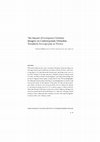
Northeast African Studies, Vol. 19, No.2, 2019
https://www.jstor.org/stable/10.14321/nortafristud.19.2.0091
This article addresses the impact of... more https://www.jstor.org/stable/10.14321/nortafristud.19.2.0091
This article addresses the impact of modern European Christian imagery on the visual culture of the Orthodox Tewahedo Church of Eritrea, which has a long history of using illuminated manuscripts, paintings, and crosses as essential elements of worship and prayer. Tewahedo icons are characterized by brown- and black-skinned Christian figures and indigenized settings that narrate Evangelical and monastic scripture for devotees. This study highlights the domination of European white imagery in liturgical spheres in Eritrea and assesses the impact on the semiotic composition of locally produced paintings. Further, nuanced codes of race and skin color are analyzed in relation to connotations of good and evil. The semiotic analysis in this article also shows that European influences are more prevalent in religious paintings that depict recognized saints in Catholic Europe, in comparison to images of local monastic saints, whose depiction continues to mirror the visual metaphors and local myths of the Tigrinya people.

Journal of African Cultural Studies, 2015
The paper focuses on the shifts in the iconic representation of war heroes of the Eritrean strugg... more The paper focuses on the shifts in the iconic representation of war heroes of the Eritrean struggle for freedom, by studying key iconic photographs and their significance to the Eritrean national identity construction process. The article focuses on one of the most famous photographs in the country which has been related to the discourse that indebts peace and freedom of the country to the history of the nation’s freedom fighters. The photograph analysed in this paper is that of Hamid Idris Awate, the man credited with starting the 30-year-long Eritrean armed struggle for independence from Ethiopian rule. This image is compared to another photograph taken at the end of the Thirty Years’ War. The two images, which have a 30-year gap between them, exhibit a shift from the aspiration of individual heroes and figures towards a collective spirit of sacrifice and achievement in the development of the national Eritrean narrative. This study shows that Awate’s photograph ascended to the state of a national icon owing to contextual connotations derived from its content. Early Orthodox Christian imagery is comparatively analysed as a possible factor for the potency of the compositional style in the photograph. Moreover, the essay relates the photograph to Italian pictorial representations of black native recruits and comparatively links it with the visual representation of Eritrean society by Italian colonizers.
States. Trenton: Red Sea P., 2017, 202 pp. Yonatan Tewelde* Dawit Woldu and Irvin Bromall's Faces... more States. Trenton: Red Sea P., 2017, 202 pp. Yonatan Tewelde* Dawit Woldu and Irvin Bromall's Faces of Oppression and the Price of Justice gives an up-close account of the suffering and misunderstandings Eritrean refugees continue to face through the story of a woman named "Natsenet." The book shows three stages Natsent went through: the difficult political and socio-cultural realities that pushed her to leave the comfort of her family and home; the semi-slavery domestic labor in Saudi Arabia; and the socio-cultural, economic and psychological challenges she faced in her pursuit of asylum in the United States.
A short essay on how key theories of communication and media fit in explaining the horizontalizat... more A short essay on how key theories of communication and media fit in explaining the horizontalization of communication and acquisition of multimodal content delivery by users in platforms created by digital technology?
This paper renders a discourse analysis on the textual construction of meaning regarding Chagas d... more This paper renders a discourse analysis on the textual construction of meaning regarding Chagas disease, a tropical disease mainly prevalent in some Latin American countries.
Öz: Bu çalışmada gelişmiş ülkeler dışında kalan periferi ülkelere gelen haber akışında Johan Galt... more Öz: Bu çalışmada gelişmiş ülkeler dışında kalan periferi ülkelere gelen haber akışında Johan Galtung'un ileri sürdüğü Batı ya da Merkez Medya Ajanslarından bağımsız bir yatay etkileşiminin olmadığı yönündeki varsayımının aksine bir bulgu elde edilmiştir. Eritrea Profili gazetesi için İran haber kanalı Press TV uluslararası haber alanında önemli ve baskın bir haber kaynağıdır ki bu bağlamda yatay haber akışı bulgulanmıştır. Bu durumda gelişmiş ve merkez ülke konumunda olmayan ülkeleredeki daha büyük medya ajansları da diğer periferi ülkelerdeki medya ajanslarını beslediği öne sürülmektedir. Anahtar Kelimeler: Yatay akış, hegemonya, görüntü, temsil, Afrika'ya ilişkin haberler, haber kaynakları, olumsuz haberler.
Dada Art Movement, Source and Implications in Modern Art and Society.
Exhibitions by Yonatan T Tewelde
Drafts by Yonatan T Tewelde
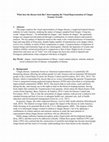
This paper explores the visual representation of chagas disease, a neglected tropical disease end... more This paper explores the visual representation of chagas disease, a neglected tropical disease endemic in Latin America, studying the nature of images sampled from Google. Using key words “chagas disease”, “la enfremedad de chagas”, and “doenća de chagas”, the generated images are categorized and analyzed through a combination of content analysis and semiotic analysis. The key pattern of depiction noted in this study is the visual prominence of triatomine bugs and mug shots of ill persons, despite higher number of transmission cycle images which receive less visibility as much of their composition is empty. Common themes of depiction of human beings and triatomine bugs are also interrogated, whereby the depiction of women and children exhibits victimized portrayal in comparison to that of men. Higher levels of iconic abstraction and more use of “relay” text with images has been also noted in Spanish and Portuguese publications when compared with those in English.
Book Reviews by Yonatan T Tewelde
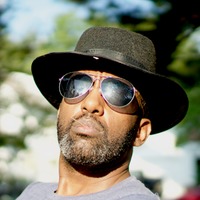


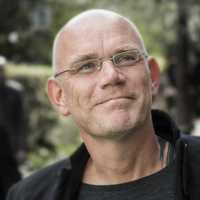
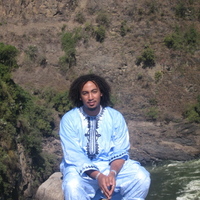





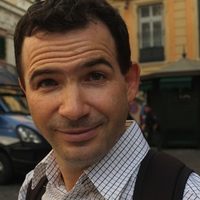
Uploads
Papers by Yonatan T Tewelde
We have been following the reports on the military conflict that has erupted between the Federal Government of Ethiopia and the Regional Government of Tigray with great concern. In addition to continuing reports of the heavy toll that the conflict is taking on the civilian population, there are reports that the cultural property of Tigray is highly endangered and directly affected. Tigray is a part of Ethiopia that hosts an extraordinarily rich cultural heritage. The cultural heritage of Tigray has contributed to the development of the region and the entire country and has increased the visibility of Ethiopia as one of the most vibrant tourist destinations in Africa. In recent years, much has been done for its study and preservation—with newly recorded historical artefacts and manuscripts, archaeological sites, new museums, restored historical buildings, paintings and manuscripts, and collections of research data—but even more remains to be done.
Some of the recent reports have been suggesting that hostilities are taking place in close proximity to renowned cultural sites, and others mentioning that they have been plundered and damaged. In this context, sites of symbolic importance for all of Ethiopia have been referred to, such as the church at Yeha, al-Najashi Mosque, the church of Maryam Dengelat, the monastery of Dabra Abbay, the monastery of Dabra Dammo, and even St Mary Cathedral in Aksum (the city of Aksum itself is entered in the UNESCO World Heritage List). There are reports of looting of manuscripts from Tigrayan churches and monasteries, and warnings that they will sooner or later be taken out of Ethiopia to be sold at antiquities markets in other countries. It is beyond any doubt that the conflict is causing heavy damage to the cultural heritage, but since most communication lines remain cut off and the information coming from the region is minimal, it is difficult to assess the real scope of the losses.
As part of a research community that has been involved for many years in the study of Ethiopian culture, we are saddened about the plight of the civilian population. And we are increasingly concerned by the effect of the conflict on the cultural heritage of Tigray. We appeal to all parties involved to pay serious attention to the issue. We hope that the authorized state institutions will fulfil their obligations and do everything possible to protect the cultural property of Tigray from further destruction. They should investigate the cases of loss and looting reported by local communities, and make the results of the investigations public. In addition, special measures should be taken to secure the research materials accumulated in Tigray’s institutions from misappropriation and dispersion. We further urgently call upon the warring parties to abstain from attacking the cultural heritage and to respect the integrity of the places, both religious and secular, where this heritage is preserved. National or international initiatives aimed at recuperation of the negative effects of the war upon the cultural heritage should be encouraged and supported, as should urgent salvation measures. We appeal to all colleagues to assist, where necessary, in measures for restitution of the cultural property and assessing the damage inflicted upon it.
Leonard Bahr
Alessandro Bausi
Antonella Brita
Eliana Dal Sasso
Sophia Dege-Müller
Daria Elagina
Jacopo Gnisci
Hewan Semon Marye
Susanne Hummel
Jonas Karlsson
Magdalena Krzyzanowska
Pietro Liuzzo
Leah Mascia
Mersha Alehegne Mengistie
Denis Nosnitsin
Francesca Panini
Vitagrazia Pisani
Dorothea Reule
Salsawit Kassaye
Sisay Sahle Beyene
Eugenia Sokolinski
Solomon Gebreyes Beyene
Siegbert Uhlig
The appeal has also been endorsed by:
Mario Lozano Alonso, Universidad Complutense de Madrid
Alula Tesfay Asfha, University of Tsukuba
Ewa Balicka-Witakowska, Uppsala University
Dan Batovici, UCLouvain and KU Leuven
Kathryn Bard, Boston University
Beniam Awash, State University of New York, Oneonta
Yaqob Beyene, University of Naples "L'Orientale"
Verena Böll, Dresden
Vitor Borges da Cunha, Universidade Federal de Pelotas
Claire Bosc-Tiessé, Institut National d¹Histoire de l¹Art
Maria Bulakh, HSE University, Moscow
Aaron Butts, Catholic University of America
Nicola Camilleri, University of Padua
David Cielontko, Charles University
Skip (Bruce) Dahlgren, North Little Rock, AR
Catherine D'Andrea, Simon Fraser University
Steve Delamarter, George Fox University
Dessalegn Bizuneh Ayele, University of Gondar
Giovanni Dore, Università Ca' Foscari Venezia
Haggai Erlich, Tel Aviv University
Eloi Ficquet, EPHE
Serge A. Frantsouzoff, Institute of Oriental Manuscripts of the Russian Academy of Sciences
Karen French, Baltimore,USA
Emmanuel Fritsch, Lyon
Michael Gervers, Toronto University
Orin Gensler, Leipzig
Gidena Mesfin Kebede, TU Berlin
Ekaterina Gusarova, Institute of Oriental Manuscripts of the Russian Academy of Sciences
Habtemichael Kidane
Hagos Abrha Abay, Mekelle University
Carsten Hoffmann, Philipps-Universität Marburg
Ishikawa Hiroki, Tokyo University of Foreign Studies
Olga Kapeliuk, Hebrew University
Jürgen Klein, Protestant University Wuppertal
Verena Krebs, Ruhr-University Bochum
Bar Kribus, Ruhr University, Bochum
Manfred Kropp, Mainz University
Basil Lourié, St Petersburg, Russia
Leuel Tesfasilassie
Andrea Manzo, University of Naples "L'Orientale"
Dorothea McEwan, The Warburg Institute, University of London
Mebratu K. Gebru, Agora University
Daniele Minisini, Sapienza University of Rome
Jonathan Miran, Western Washington University
Sigrid Mirabaud, Institut national d'histoire de l'art
Mikael Muehlbauer, Columbia University
Moritz Alexander Müller, Goethe-Universität Frankfurt am Main
Rumi Okazaki, Shibaura Institute of Technology
Anne Parsons, London
Pierluigi Piovanelli, University of Ottawa - EPHE, Sciences religieuses, PSL
Maija Priess, Universität Hamburg
Delio Vania Proverbio, Biblioteca Apostolica Vaticana
Valeria N. Semenova, Peter the Great Museum of Anthropology and Ethnography (Kunstkamera) RAS
Luisa Sernicola, University of Naples "L'Orientale"
Kay Kaufman Shelemay, Harvard University
Veronika Six, Universitäts- und Staatsbibliothek, Hamburg
Nobuhiro Shimizu, the University of Tokyo
Wolbert G.C. Smidt, Friedrich-Schiller-Universität Jena
Solomon Getaneh, Addis Ababa
Toda Satoshi, Hokkaido University
Jutta Sperling, Amherst College and Hampshire College, Amherst, MA
Nafisa Valieva, CNRS
Massimo Villa, University of Naples "L'Orientale"
Rainer Voigt, FU Berlin
Wakasa Motomichi, Tokyo
Sean M Winslow, Karl-Franzens-Universität Graz
Anaïs Wion, CNRS, Paris
Yonatan Tewelde, Ohio University
This article addresses the impact of modern European Christian imagery on the visual culture of the Orthodox Tewahedo Church of Eritrea, which has a long history of using illuminated manuscripts, paintings, and crosses as essential elements of worship and prayer. Tewahedo icons are characterized by brown- and black-skinned Christian figures and indigenized settings that narrate Evangelical and monastic scripture for devotees. This study highlights the domination of European white imagery in liturgical spheres in Eritrea and assesses the impact on the semiotic composition of locally produced paintings. Further, nuanced codes of race and skin color are analyzed in relation to connotations of good and evil. The semiotic analysis in this article also shows that European influences are more prevalent in religious paintings that depict recognized saints in Catholic Europe, in comparison to images of local monastic saints, whose depiction continues to mirror the visual metaphors and local myths of the Tigrinya people.
Exhibitions by Yonatan T Tewelde
Drafts by Yonatan T Tewelde
Book Reviews by Yonatan T Tewelde
We have been following the reports on the military conflict that has erupted between the Federal Government of Ethiopia and the Regional Government of Tigray with great concern. In addition to continuing reports of the heavy toll that the conflict is taking on the civilian population, there are reports that the cultural property of Tigray is highly endangered and directly affected. Tigray is a part of Ethiopia that hosts an extraordinarily rich cultural heritage. The cultural heritage of Tigray has contributed to the development of the region and the entire country and has increased the visibility of Ethiopia as one of the most vibrant tourist destinations in Africa. In recent years, much has been done for its study and preservation—with newly recorded historical artefacts and manuscripts, archaeological sites, new museums, restored historical buildings, paintings and manuscripts, and collections of research data—but even more remains to be done.
Some of the recent reports have been suggesting that hostilities are taking place in close proximity to renowned cultural sites, and others mentioning that they have been plundered and damaged. In this context, sites of symbolic importance for all of Ethiopia have been referred to, such as the church at Yeha, al-Najashi Mosque, the church of Maryam Dengelat, the monastery of Dabra Abbay, the monastery of Dabra Dammo, and even St Mary Cathedral in Aksum (the city of Aksum itself is entered in the UNESCO World Heritage List). There are reports of looting of manuscripts from Tigrayan churches and monasteries, and warnings that they will sooner or later be taken out of Ethiopia to be sold at antiquities markets in other countries. It is beyond any doubt that the conflict is causing heavy damage to the cultural heritage, but since most communication lines remain cut off and the information coming from the region is minimal, it is difficult to assess the real scope of the losses.
As part of a research community that has been involved for many years in the study of Ethiopian culture, we are saddened about the plight of the civilian population. And we are increasingly concerned by the effect of the conflict on the cultural heritage of Tigray. We appeal to all parties involved to pay serious attention to the issue. We hope that the authorized state institutions will fulfil their obligations and do everything possible to protect the cultural property of Tigray from further destruction. They should investigate the cases of loss and looting reported by local communities, and make the results of the investigations public. In addition, special measures should be taken to secure the research materials accumulated in Tigray’s institutions from misappropriation and dispersion. We further urgently call upon the warring parties to abstain from attacking the cultural heritage and to respect the integrity of the places, both religious and secular, where this heritage is preserved. National or international initiatives aimed at recuperation of the negative effects of the war upon the cultural heritage should be encouraged and supported, as should urgent salvation measures. We appeal to all colleagues to assist, where necessary, in measures for restitution of the cultural property and assessing the damage inflicted upon it.
Leonard Bahr
Alessandro Bausi
Antonella Brita
Eliana Dal Sasso
Sophia Dege-Müller
Daria Elagina
Jacopo Gnisci
Hewan Semon Marye
Susanne Hummel
Jonas Karlsson
Magdalena Krzyzanowska
Pietro Liuzzo
Leah Mascia
Mersha Alehegne Mengistie
Denis Nosnitsin
Francesca Panini
Vitagrazia Pisani
Dorothea Reule
Salsawit Kassaye
Sisay Sahle Beyene
Eugenia Sokolinski
Solomon Gebreyes Beyene
Siegbert Uhlig
The appeal has also been endorsed by:
Mario Lozano Alonso, Universidad Complutense de Madrid
Alula Tesfay Asfha, University of Tsukuba
Ewa Balicka-Witakowska, Uppsala University
Dan Batovici, UCLouvain and KU Leuven
Kathryn Bard, Boston University
Beniam Awash, State University of New York, Oneonta
Yaqob Beyene, University of Naples "L'Orientale"
Verena Böll, Dresden
Vitor Borges da Cunha, Universidade Federal de Pelotas
Claire Bosc-Tiessé, Institut National d¹Histoire de l¹Art
Maria Bulakh, HSE University, Moscow
Aaron Butts, Catholic University of America
Nicola Camilleri, University of Padua
David Cielontko, Charles University
Skip (Bruce) Dahlgren, North Little Rock, AR
Catherine D'Andrea, Simon Fraser University
Steve Delamarter, George Fox University
Dessalegn Bizuneh Ayele, University of Gondar
Giovanni Dore, Università Ca' Foscari Venezia
Haggai Erlich, Tel Aviv University
Eloi Ficquet, EPHE
Serge A. Frantsouzoff, Institute of Oriental Manuscripts of the Russian Academy of Sciences
Karen French, Baltimore,USA
Emmanuel Fritsch, Lyon
Michael Gervers, Toronto University
Orin Gensler, Leipzig
Gidena Mesfin Kebede, TU Berlin
Ekaterina Gusarova, Institute of Oriental Manuscripts of the Russian Academy of Sciences
Habtemichael Kidane
Hagos Abrha Abay, Mekelle University
Carsten Hoffmann, Philipps-Universität Marburg
Ishikawa Hiroki, Tokyo University of Foreign Studies
Olga Kapeliuk, Hebrew University
Jürgen Klein, Protestant University Wuppertal
Verena Krebs, Ruhr-University Bochum
Bar Kribus, Ruhr University, Bochum
Manfred Kropp, Mainz University
Basil Lourié, St Petersburg, Russia
Leuel Tesfasilassie
Andrea Manzo, University of Naples "L'Orientale"
Dorothea McEwan, The Warburg Institute, University of London
Mebratu K. Gebru, Agora University
Daniele Minisini, Sapienza University of Rome
Jonathan Miran, Western Washington University
Sigrid Mirabaud, Institut national d'histoire de l'art
Mikael Muehlbauer, Columbia University
Moritz Alexander Müller, Goethe-Universität Frankfurt am Main
Rumi Okazaki, Shibaura Institute of Technology
Anne Parsons, London
Pierluigi Piovanelli, University of Ottawa - EPHE, Sciences religieuses, PSL
Maija Priess, Universität Hamburg
Delio Vania Proverbio, Biblioteca Apostolica Vaticana
Valeria N. Semenova, Peter the Great Museum of Anthropology and Ethnography (Kunstkamera) RAS
Luisa Sernicola, University of Naples "L'Orientale"
Kay Kaufman Shelemay, Harvard University
Veronika Six, Universitäts- und Staatsbibliothek, Hamburg
Nobuhiro Shimizu, the University of Tokyo
Wolbert G.C. Smidt, Friedrich-Schiller-Universität Jena
Solomon Getaneh, Addis Ababa
Toda Satoshi, Hokkaido University
Jutta Sperling, Amherst College and Hampshire College, Amherst, MA
Nafisa Valieva, CNRS
Massimo Villa, University of Naples "L'Orientale"
Rainer Voigt, FU Berlin
Wakasa Motomichi, Tokyo
Sean M Winslow, Karl-Franzens-Universität Graz
Anaïs Wion, CNRS, Paris
Yonatan Tewelde, Ohio University
This article addresses the impact of modern European Christian imagery on the visual culture of the Orthodox Tewahedo Church of Eritrea, which has a long history of using illuminated manuscripts, paintings, and crosses as essential elements of worship and prayer. Tewahedo icons are characterized by brown- and black-skinned Christian figures and indigenized settings that narrate Evangelical and monastic scripture for devotees. This study highlights the domination of European white imagery in liturgical spheres in Eritrea and assesses the impact on the semiotic composition of locally produced paintings. Further, nuanced codes of race and skin color are analyzed in relation to connotations of good and evil. The semiotic analysis in this article also shows that European influences are more prevalent in religious paintings that depict recognized saints in Catholic Europe, in comparison to images of local monastic saints, whose depiction continues to mirror the visual metaphors and local myths of the Tigrinya people.